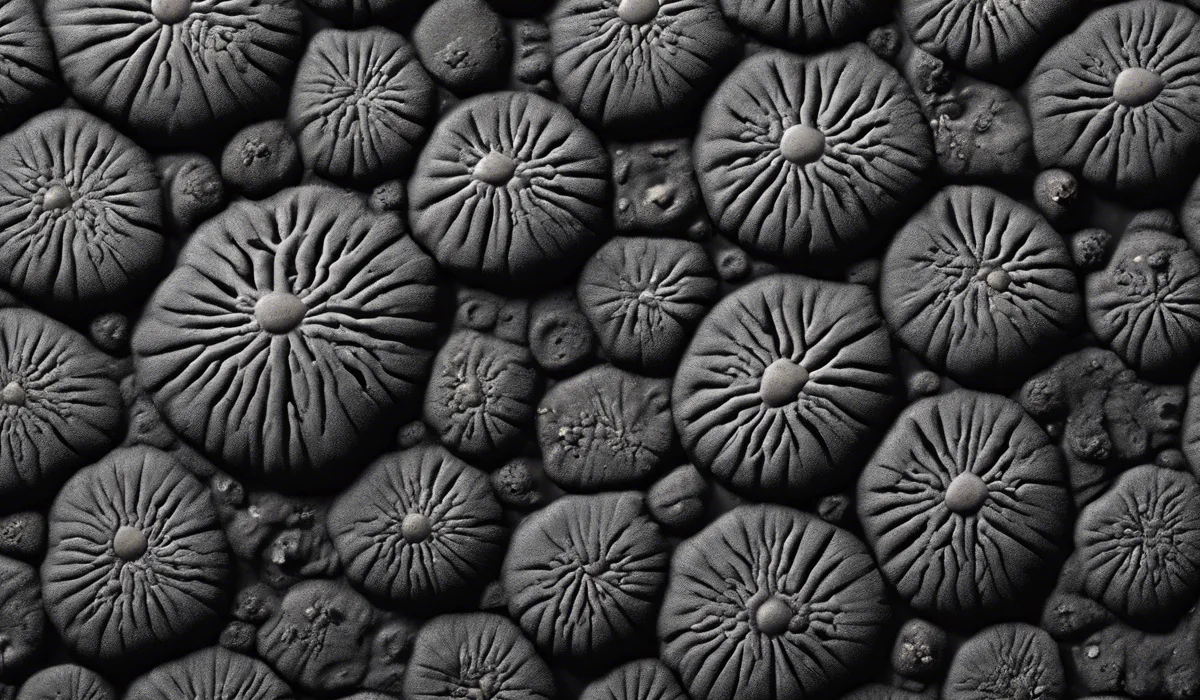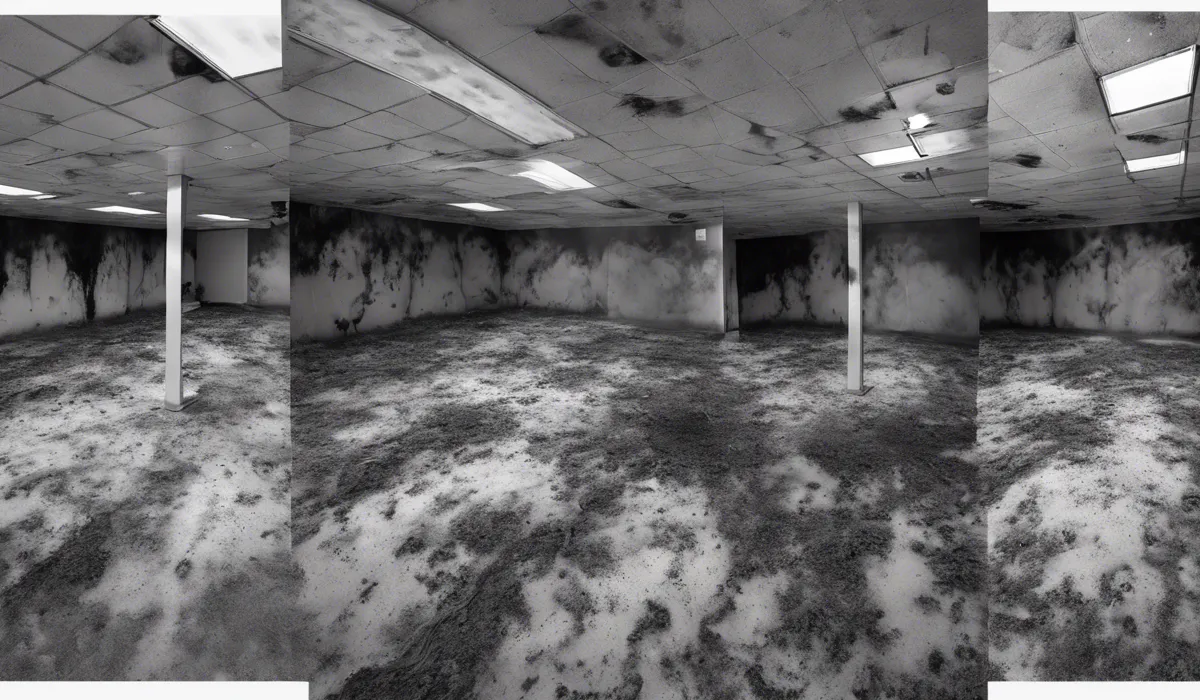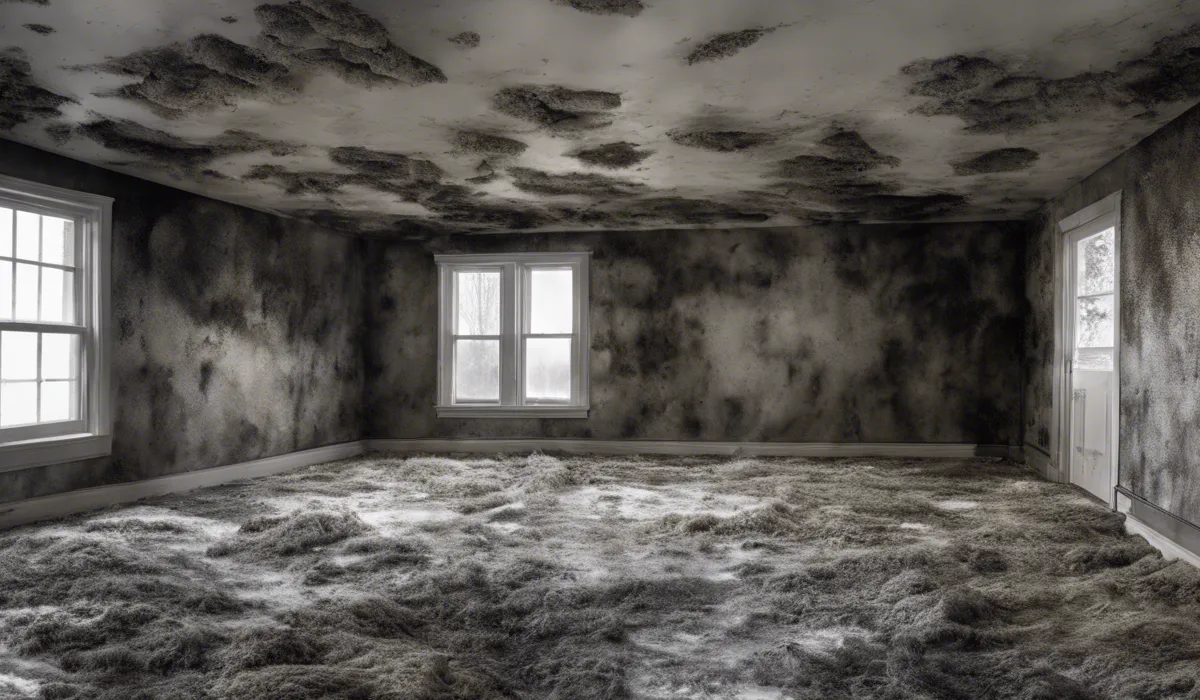Black mold, or Stachybotrys chartarum, typically originates from persistent moisture in environments such as damp basements, bathrooms, or areas with water damage.
It thrives on materials like drywall and insulation when humidity levels are high and ventilation is poor. Addressing moisture issues is crucial for prevention.
Origins of Black Mold

What is Black Mold?
Black mold, known scientifically as Stachybotrys chartarum, is a type of fungi that appears as dark black or greenish-black in color.
This mold can grow on materials with a high cellulose content, such as drywall, carpet, wallpaper, or insulation, when they become damp or water-damaged.
Black mold needs constant moisture to flourish, which is why it is commonly found in wet or humid environments.
Environmental Conditions for Growth
Humidity and Moisture
One of the primary conditions that promote black mold growth is high humidity. Homes with humidity levels above 60 percent can create habitats for mold spores to settle and multiply.
Persistent moisture due to plumbing leaks, flooding, or poor ventilation can also contribute to mold proliferation, especially when these issues are not promptly addressed.
Organic Materials as a Food Source
Black mold thrives on organic materials that are common in building constructions like wood, paper, and fiber.
These materials, when exposed to moisture, become ideal feeding grounds for black mold, allowing it to grow and spread.
Typical Mold Habitats in Buildings
Bathrooms and Kitchens
Bathrooms and kitchens are prime locations for black mold because they are often exposed to steam and water, creating a humid atmosphere.
Poorly ventilated bathrooms and kitchens can retain this moisture, leading to mold growth on walls, ceilings, and under sinks.
Basements, Crawl Spaces, and Attics
Basements and crawl spaces can become breeding grounds for black mold due to their tendency to be damp and poorly lit.
Attics with inadequate insulation or ventilation are also susceptible, especially after a roof leak or during periods of high humidity.
HVAC Systems
Heating, Ventilation, and Air Conditioning (HVAC) systems, if not properly maintained, can distribute mold spores throughout a home.
Moisture accumulation in ductwork is a common problem that can lead to widespread mold issues.
Impact of Seasons on Mold Growth
Seasonal changes can affect the growth of black mold. Spring and summer typically bring higher humidity, which can promote mold growth.
Conversely, in winter, heating systems can create warm, damp conditions that are also conducive to mold development if proper ventilation is not maintained.
Health Implications and Identification

Exposure Risks and Health Concerns
Respiratory Complications
Breathing in black mold spores can cause respiratory issues, particularly in individuals with asthma or other lung conditions.
Symptoms can range from coughing and wheezing to more severe reactions like shortness of breath.
Allergies and Sensitivity
Exposure to black mold can trigger allergic reactions in some people. These reactions can include a runny nose, itchy eyes, skin rashes, and sinus congestion.
Individuals with mold allergies may experience more pronounced symptoms.
Mycotoxins and Their Effects
Some molds, including black mold, produce toxic substances called mycotoxins. Prolonged exposure to these toxins can lead to serious health issues like neurological problems and can even be life-threatening.
Identifying Black Mold in Your Home
Visual Characteristics
Black mold is distinguishable by its dark color and slimy texture. It may also appear powdery if it has been disturbed.
Visual clues alone, however, are not enough to confirm the presence of Stachybotrys chartarum, as other molds can look similar.
Distinguishing Between Molds
There are many types of mold that can inhabit indoor environments. Telling them apart can be challenging without proper training.
Some molds may be harmless, while others can pose significant health risks.
The Necessity of Professional Tests
To accurately identify and confirm the presence of black mold, it is essential to have professional testing done.
This ensures the correct identification of the mold type and the appropriate measures taken to address it.
Prevention and Remediation Strategies

Moisture Control and Ventilation
Improving Airflow in Your Home
Enhancing ventilation in your home is key to preventing mold growth. This can be achieved by using exhaust fans in bathrooms and kitchens, ensuring attics and crawl spaces are well-ventilated, and opening windows when weather permits to allow fresh air to circulate.
Maintenance to Prevent Water Damage
Regular inspections and maintenance of pipes, roofs, and gutters can help prevent water damage that often leads to mold growth.
Fixing leaks promptly and ensuring good drainage around your home are essential preventative measures.
Using Dehumidifiers and Air Purifiers
Dehumidifiers can help maintain an indoor humidity level between 30 and 50 percent, making it less hospitable for mold to grow.
Air purifiers with HEPA filters can also capture mold spores from the air, reducing the likelihood of mold development.
Cleaning and Safety Measures
Handling Minor Mold Issues Safely
If you encounter a small area of mold, it can often be cleaned using the right techniques and cleaning agents.
Always wear protective gear such as gloves, goggles, and a mask to protect yourself from mold spores.
Appropriate Cleaning Agents
For small mold infestations, a mixture of water and detergent may be effective. For tougher mold, solutions like vinegar or diluted bleach can be used, but it’s important to follow safety instructions and ensure the area is well-ventilated.
Engaging Professional Mold Remediation
Recognizing When Expert Help is Needed
If you’re facing a large mold infestation or if mold is in your HVAC system, it’s time to call in the professionals.
They have the expertise and equipment to safely and effectively remove mold from your home.
Understanding the Remediation Process
Professional mold remediation involves assessing the extent of the infestation, containing the area to prevent the spread of spores, and using HEPA vacuums and antimicrobial agents to eradicate the mold.
Air filtration devices may also be used to capture airborne spores.
Long-Term Prevention of Black Mold
Building a Mold-Resistant Environment
After remediation, it’s crucial to take steps to prevent mold from returning. Use mold-resistant products during any renovations, keep humidity levels in check, and continue to address any moisture problems quickly to maintain a mold-resistant environment.
FAQs About Black Mold Origins
Where does black mold typically originate in a home?
Black mold often originates in areas with persistent moisture, such as damp basements, bathrooms, or spaces with water damage.
What causes black mold to grow?
Black mold grows due to high humidity levels, poor ventilation, and the presence of materials like drywall and insulation that it can feed on.
Can black mold appear in areas without direct water damage?
Yes, black mold can appear in any area with sufficient moisture, even without direct water damage, if the humidity is high and ventilation is inadequate.
How can I prevent the growth of black mold?
Preventing black mold involves controlling humidity levels, ensuring proper ventilation, and promptly addressing any moisture issues.
Is black mold only found on certain materials?
Black mold primarily thrives on porous materials that retain moisture, such as drywall, insulation, and wood products.
Final Thoughts
Black mold, known as Stachybotrys chartarum, arises in consistently moist environments like damp basements and water-damaged areas.
It proliferates on materials such as drywall and insulation under conditions of high humidity and inadequate ventilation. To prevent its occurrence, effectively managing and eliminating moisture sources is essential.
